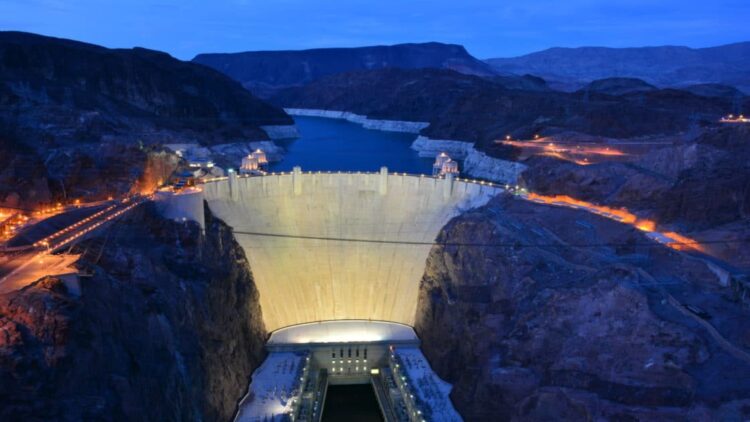Hidden in central Washington state, there is a true wonder of the world that converts the force of nature into renewable energy. The Grand Coulee Dam, the embodiment of efficiency and sustainability, produces 7,000 MWs from water alone.
This massive dam is much more than a hydroelectric powerhouse: it generates irrigation supplies, serves recreation purposes, and accomplishes flood control; it represents technology and water or human craftsmanship and nature.
Harnessing the immense energy of the Columbia River’s mighty flow
Grand Coulee Dam is one of the largest hydropower plants on the Columbia River north of Washington State. Measuring almost a mile in length, the power station is 550 feet tall, and the concrete penstocks that the river flows through and through are 40 feet wide.
It has four power plants, and the Third Power Plant consists of six generators with over 4,000 MW of electric power generation capacity. The plants produce clean, renewable power for millions of households in the Pacific Northwest and beyond.
This could not have been achieved without the river, which supplies more than 35,000 cfs of water through the dam. In its power generation, the dam serves other vital irrigation and flood control functions. The holding of Franklin D. Roosevelt Lake supplies about 670,000 acres of farmland, boosting agriculture in the area.
Hydroelectric stations cannot be the only role of the Grand Coulee Dam, as they are one of the key elements of environmental protection. This design contains a vision of the sustainable development of energy demand and ecological and social conditions. Another dam that has been in the same category is this.
Revolutionizing energy and irrigation in the Pacific Northwest
The Grand Coulee Dam hydropower provides the Pacific Northwest’s essential power and 21 billion kWh annually. This power brings light to cities and industries and even reaches Canada through the Columbia River Treaty. In addition to supplying electricity, the dam increases the importance of irrigation, making desert-like areas productive farmlands.
This irrigation capability is due to the John W. Keys Pump-Generator Plant, which pumps water into Banks Lake. This 27-mile reservoir supplies a complex of canals and laterals that nourish crops estimated to be over $1 billion yearly. This project is an excellent example of multipurpose engineering, where an energy issue is also an agricultural problem.
In addition, it controls the floods each season and protects human settlements in the lower riparian areas. Through river flow control, it has saved over $200 million in floods since the dam was constructed, protecting against the vagaries of nature.
Overcoming challenges to build a monument of progress
The construction of the Grand Coulee Dam was not without challenges, as we can see. When formulated, the aims of this project were focused on irrigation, but there was a heated dispute between the supporters of water pumping and the enthusiasts of canals. In the end, the notion of a high dam that could be multipurpose won the day, and its proponents had the support of President Franklin D. Roosevelt’s New Deal.
Construction was started in 1933 during the great depression and was able to provide working opportunities for thousands and also played an essential role in the economy of the place. By 1941, the dam’s first generator was commissioned, marking the end of planning, hard work, and commitment. Today, constant development makes the dam one of the most effective structures for serving future generations.
The dam is precisely that: a structure and, for many more, an example of the capability of human beings to work together. Its advantages extend outwards; it affects energy policies, agricultural practices, and community preparedness. The Grand Coulee Dam is an engineering wonder and transformer for the sustainability of energy, agricultural land, and the protection of communities. The evidence supporting the dam’s design and structure was identified earlier.
Such accomplishments as the utilization of water power to produce 7,000 MW of clean energy are proof of the fact that innovation can coexist with nature. Modernization processes are ongoing, and the dam has become a symbol of modernization and the beacon of the future while retaining its historic significance.

